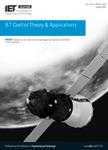版权所有:内蒙古大学图书馆 技术提供:维普资讯• 智图
内蒙古自治区呼和浩特市赛罕区大学西街235号 邮编: 010021

作者机构:School of Automation Beijing Institute of Technology Beijing 100081 People's Republic of China Key Laboratory of Intelligent Control and Decision of Complex Systems Beijing Institute of Technology Beijing 100081 People's Republic of China
出 版 物:《IET Control Theory & Applications》
年 卷 期:2019年第13卷第1期
页 面:27-35页
主 题:nonlinear control systems robust control stability predictive control control system analysis control system synthesis discrete time systems linear systems discrete-time nonlinear systems external disturbances event-based model predictive control problem discrete-time nonlinear control systems triggering conditions terminal region actual system state trajectory corresponding optimal state trajectory predicted nominal state trajectory desired relative threshold sufficient conditions triggering threshold disturbance event-based control system system parameters
摘 要:The event-based model predictive control (MPC) problem for discrete-time non-linear control systems with external disturbances is studied. Two triggering conditions are designed based on whether the system state is within the terminal region or not. The first one is triggered outside the terminal region when the difference between the actual system state trajectory and the corresponding optimal state trajectory violates a relative threshold, while the second one is triggered inside the terminal region if the difference between the actual system state trajectory and the predicted nominal state trajectory violates a desired relative threshold. The feasibility analysis and stability analysis are given in detail. Sufficient conditions for feasibility relating to the triggering threshold and disturbance bound are obtained. Sufficient conditions for stability of the event-based control system referring to system parameters, triggering threshold and disturbance bound are given. Besides, the upper bound of the state trajectory is obtained and a robust invariant set that the system state will enter in finite time is given. Finally, simulation examples are given to validate the effectiveness of the proposed method.